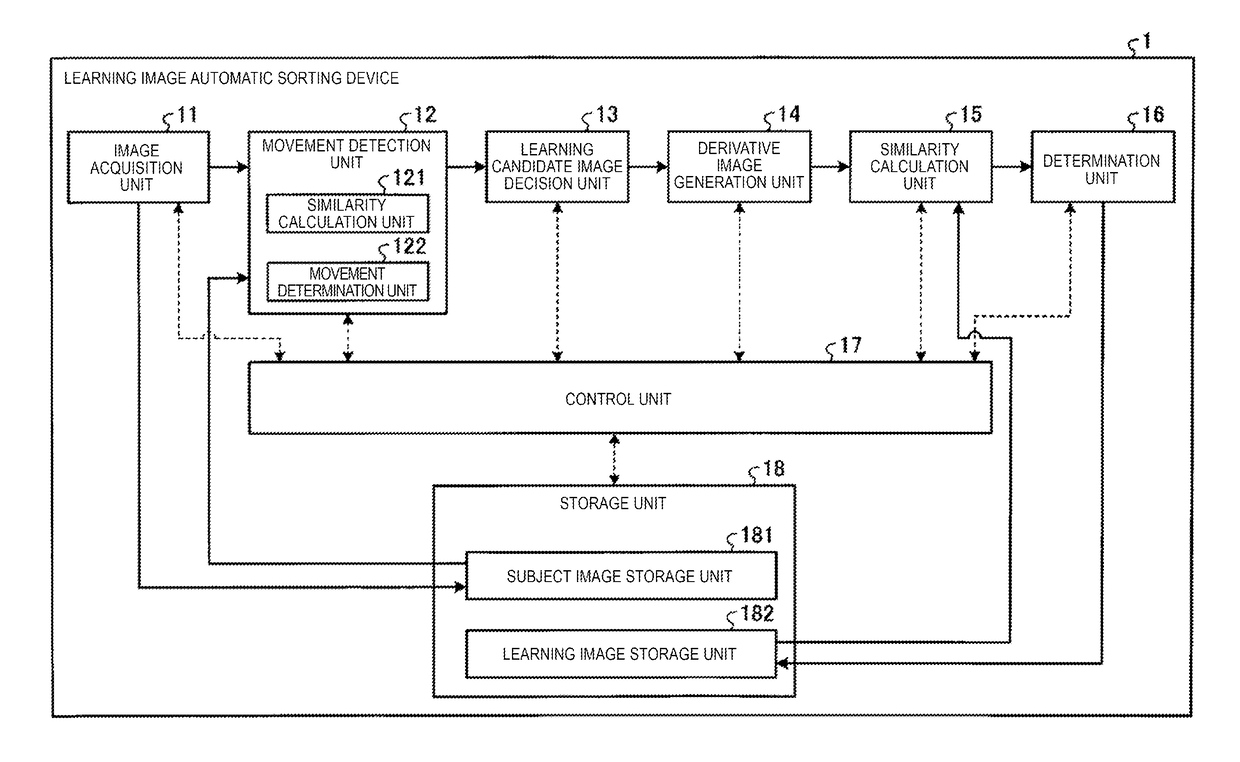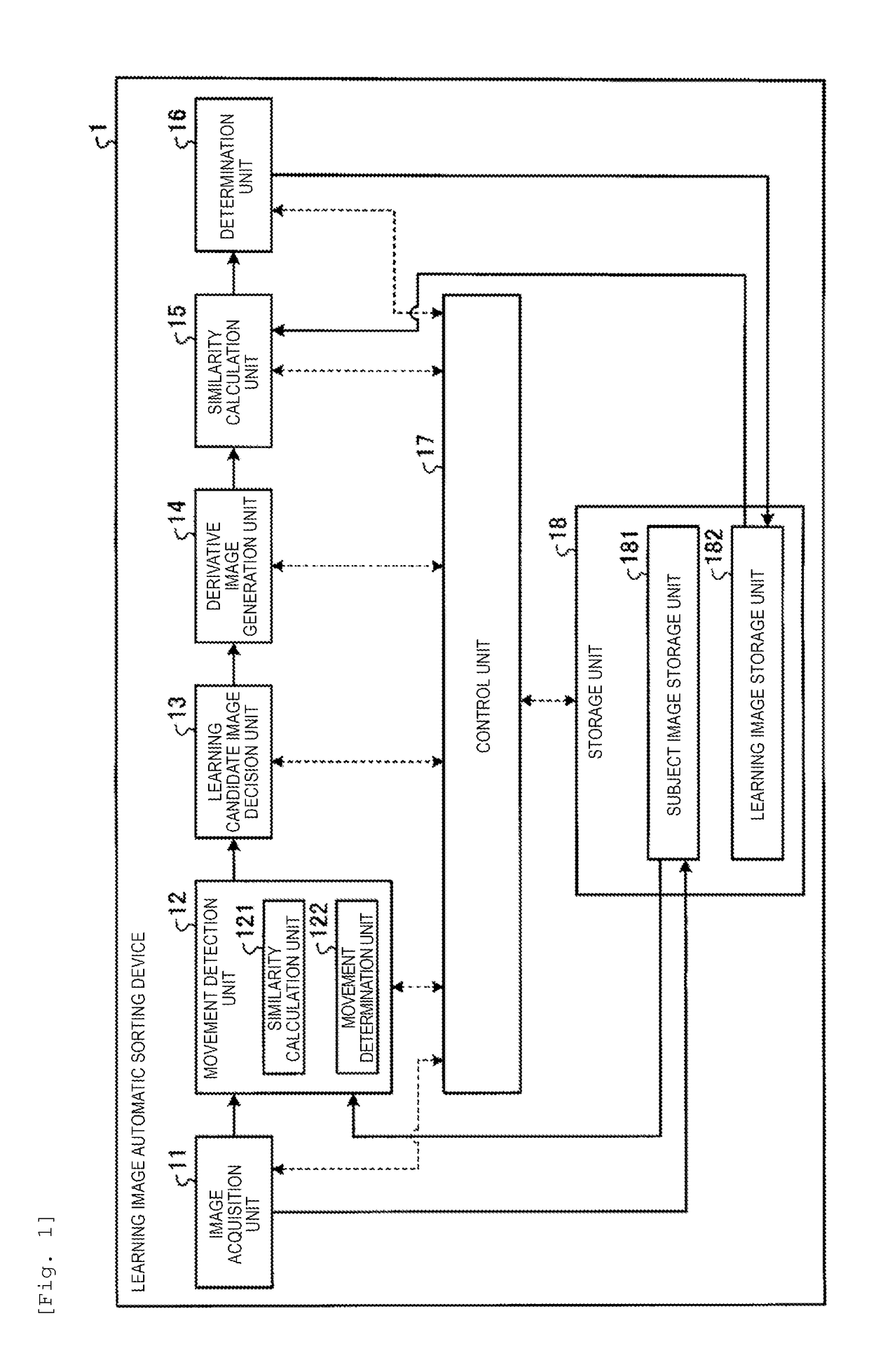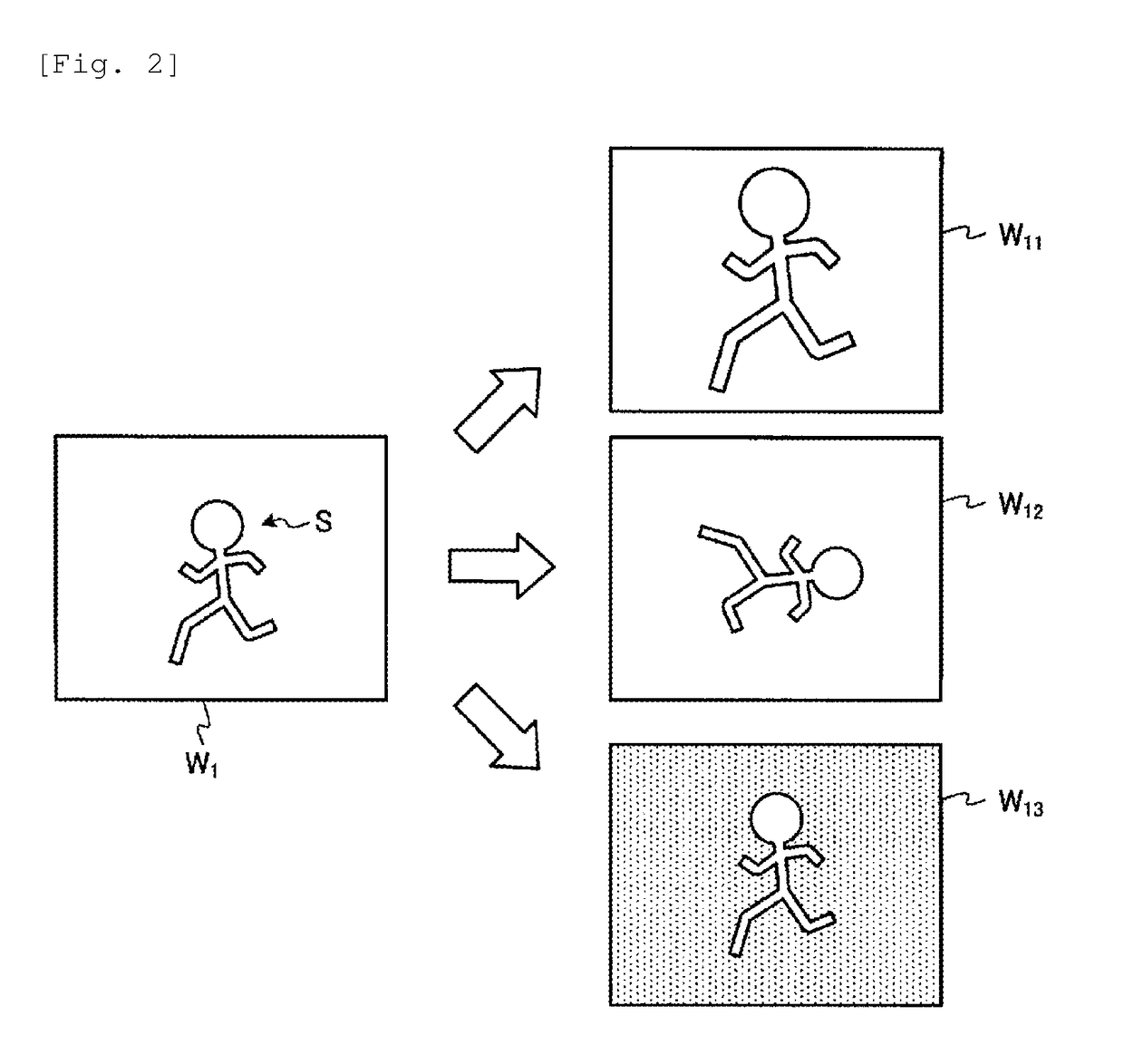Learning image automatic sorting device, learning image automatic sorting method, and learning image automatic sorting program
- Summary
- Abstract
- Description
- Claims
- Application Information
AI Technical Summary
Benefits of technology
Problems solved by technology
Method used
Image
Examples
embodiment 1
[0022]FIG. 1 is a block diagram illustrating a functional configuration of a learning image automatic sorting device 1 in an embodiment 1 of the present invention. The learning image automatic sorting device 1 illustrated in FIG. 1 includes an image acquisition unit 11, a movement detection unit 12, a learning candidate image decision unit 13 (decision unit), a derivative image generation unit 14, a similarity calculation unit 15, a determination unit 16 (sorting unit), a control unit 17, and a storage unit 18. The storage unit 18 includes a subject image storage unit 181 that stores subject images acquired by the image acquisition unit 11 and a learning image storage unit 182 that stores a learning image which is an image used when the image recognition is performed and is an image of various variations extracted from past images.
[0023]The image acquisition unit 11 receives an image signal from the outside, or acquires an image stored in the storage unit 18. By performing signal pr...
modification example 1
of the Embodiment 1
[0049]In the description of the embodiment 1 described above, the movement detection unit 12 calculates the SAD value as the similarity to detect the movement, but, the present invention is not limited thereto. In the present modification example 1, the subject image is divided into a plurality of areas, and pattern matching is performed on each area, and then, the movement is detected.
[0050]A learning image automatic sorting device in the present modification example 1 includes a movement detection unit 12A instead of the movement detection unit 12 of the learning image automatic sorting device 1 described above. FIG. 4 is a block diagram illustrating a configuration of the movement detection unit 12A of the learning image automatic sorting device in the modification example 1 of the embodiment 1 of the present invention. The movement detection unit 12A includes an area division unit 123, a buffer 124, a similarity calculation unit 125, a movement determination u...
modification example 2 of embodiment 1
[0059]In the description of the embodiment 1 described above, the learning candidate image decision unit 13 determines whether or not to set the subject image as the learning candidate image based on the movement detection information input from the movement detection unit 12, however, the present invention is not limited thereto. In the present modification example 2, in addition to the movement detection information, whether or not to set the subject image as the learning candidate image is determined based on shake information obtained by detecting a shake of the subject image.
[0060]FIG. 6 is a block diagram illustrating a functional configuration of a learning image automatic sorting device 1A in the modification example 2 of the embodiment 1 of the present invention. The learning image automatic sorting device 1A in the present modification example 2 further includes a shake detection unit 19 in addition to the configuration of the learning image automatic sorting device 1 desc...
PUM
 Login to View More
Login to View More Abstract
Description
Claims
Application Information
 Login to View More
Login to View More - R&D
- Intellectual Property
- Life Sciences
- Materials
- Tech Scout
- Unparalleled Data Quality
- Higher Quality Content
- 60% Fewer Hallucinations
Browse by: Latest US Patents, China's latest patents, Technical Efficacy Thesaurus, Application Domain, Technology Topic, Popular Technical Reports.
© 2025 PatSnap. All rights reserved.Legal|Privacy policy|Modern Slavery Act Transparency Statement|Sitemap|About US| Contact US: help@patsnap.com



